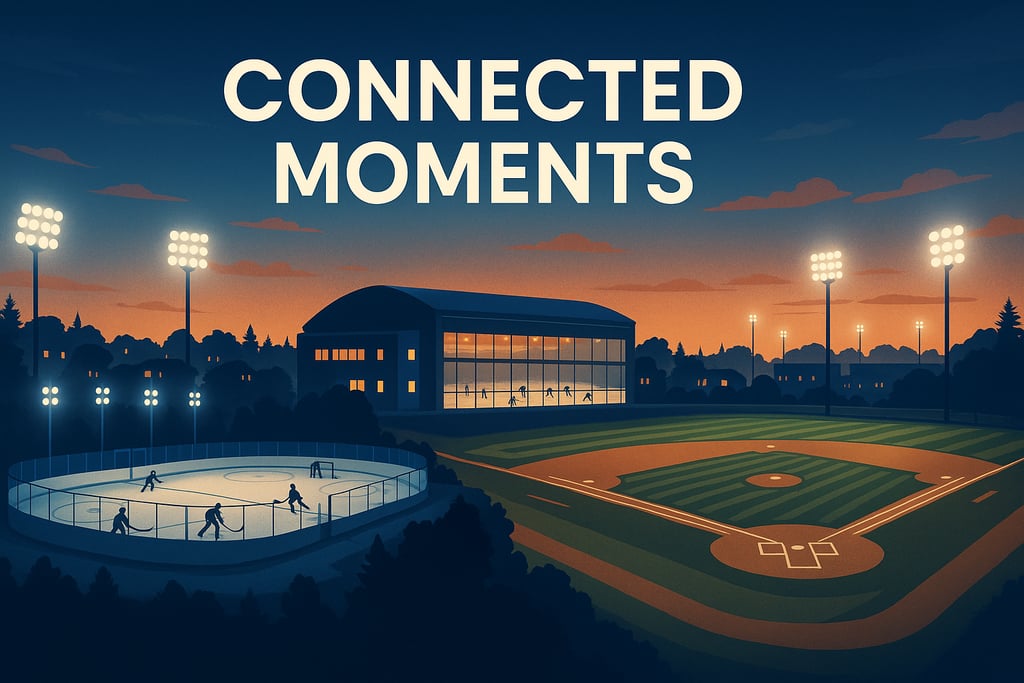Next App update dropping soon!
We’re leveling up the Streakers app with fresh features and performance boosts.
Connected Moments
From a local championship diamond to a Major Junior debut, the magic of sport now travels in real time. The walls between fans, players, and moments have disappeared, and the feeling of connection has never been stronger. This is what the new era of sport looks like: shared, human, and alive.
Craig Weissenfels
10/7/20253 min read


Sports are closing the gap between the fan and the field.
Everywhere you look, access is becoming immersion. A youth hockey game streams live from a phone. A tournament’s highlight reel hits social media before the crowd leaves the rink. Parents replay the action in the car. Grandparents watch later that night and feel as if they were there.
The walls that once separated fans from the field are coming down. In Cleveland, the Browns’ new stadium is being built for 2029 with the closest lower-bowl seating in the NFL. Designers are rethinking every sightline and angle so that fans feel like they are part of the play instead of simply watching it. The translucent roof, the steep tiers, and the acoustics are all designed to pull people closer. It is architecture built for emotion.
That same mindset is shaping sports culture far beyond the NFL. In Los Angeles, Cosm has built immersive LED domes where fans are completely surrounded by the game. You do not just watch the field. You feel like you are inside it. In Orlando, Stadium Club combines live broadcasts, interactive simulators, and social energy. These experiences turn sports bars into playable arenas where watching becomes participating. Every piece of technology, every new venue, and every stream exists for one purpose: proximity.
This summer, we experienced that connection firsthand. Our recreational softball team was in the middle of a championship game. It was one of those nights that remind you why you play. The dust hung in the air. The sound of aluminum bats echoed under the lights. Between innings, the dugout went quiet as everyone caught their breath. One of our teammates was not there. He was hundreds of kilometers away, lacing up for his first Major Junior Hockey game. Between innings, his mom pulled out her phone and turned up the volume on the bench. The broadcast echoed through the dugout, the sound of the announcer calling his name as we took the field for our next inning.
Two games. Two sports. One heartbeat.
Technology did not replace the connection. It amplified it. It turned a single night into something larger than both games combined. That is what the best of modern sports is doing everywhere. It is stitching experiences together. The one-on-one challenges, the highlight clips, and the AI-generated replays are not distractions. They are new ways of feeling closer and keeping the story alive. Fans are no longer watching from the outside. They are part of the rhythm of the game. Players, creators, and fans are teaching, sharing, and celebrating in real time. The ecosystem is alive with motion and emotion.
What drives this evolution is not technology alone. It is the people who live it. They are the ones who have stood behind benches and beside boards. They are the ones who have driven through snowstorms for tournaments or stayed late to upload one more highlight. They know what it feels like when a fan base and a family are the same thing. They are the reason this movement exists, because they have lived the gap that is finally being closed.
The experience taught something simple. When you have lived the problem, you can design the solution. That experience; real, personal, and shared; is shaping everything that is coming next. Architects are designing for presence instead of scale. Platforms are building for participation instead of passive viewership. Every upgrade, every connection, and every shared moment moves in one direction: closer.
A clip from a small-town game can inspire a kid halfway across the world. A highlight can travel from a backyard stream to a stadium board. A family can feel like they are part of every play, no matter where they are. The distance that once defined sports is fading. Fans are stepping inside the story, not through access passes or VIP boxes, but through shared energy. The emotion that connects a city to its team now connects communities across continents.
For fans, this means belonging.
For teams, it means loyalty that lasts beyond seasons.
For creators and investors, it means a network that grows through experience instead of exposure.
The product of this new era is not a single app or stadium. It is proximity itself. Sports are being redesigned around that idea. Stadiums, bars, and streams are no longer destinations. They are extensions of the same heartbeat. Every seat, every screen, and every space is built to make you feel as if you are standing on the field.
The next generation of sport is not something we attend. It is something we inhabit. This is the moment we are living in now. A softball game and a Major Junior Hockey debut can exist in the same breath. Fans, players, and families can share one story in real time. The roar of the crowd can live in a dugout, a living room, or a dome screen all the same. Sports have always been about connection. Now the entire world is built to keep that connection alive.
The field is expanding.
The fans are stepping inside.
And the game has never felt closer.
